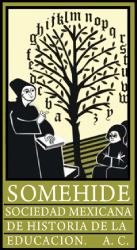Una escuela telesecundaria en contexto vulnerable: desigualdad social y educativa
DOI:
https://doi.org/10.29351/amhe.v1i1.255Palabras clave:
Escuela telesecundaria, contexto vulnerable, desigualdadResumen
Una investigación sobre las prácticas exitosas de directores de educación secundaria en nueve estados de México (Guanajuato, Nuevo León, Sonora, Chihuahua, San Luis Potosí, Jalisco, Veracruz, Chiapas y Yucatán) mostró que las estrategias y la personalidad de los directivos fueron elementos esenciales en el logro educativo de los estudiantes y en el reconocimiento social de sus instituciones, elementos que demostraban el éxito de los directores. Si bien el contexto fue un elemento que apareció en todos los casos, no fue un componente que hizo la distinción entre una escuela exitosa y una que no lo es, o cuando menos, no fue reconocido de esta forma por ninguno de los directores de la investigación. A raíz de este trabajo surgió una inquietud relacionada con el contexto: conocer las posibilidades de una gestión exitosa de los directivos que desarrollan su trabajo en escuelas que se encuentran ubicadas en contextos vulnerables o en escuelas que tienen bajo desempeño. Se asumía que el éxito podría tener otras características porque los directivos de estas instituciones seguramente enfrentaban retos diferentes. ¿Por qué para los directores de las primeras escuelas el contexto no fue significativo, o, si lo fue, las características de su gestión exitosa lo hicieron menos visible? El establecimiento de determinados criterios para la selección de las escuelas y de los directivos en la segunda investigación nos llevaron a elegir una escuela telesecundaria; las características de esta modalidad de educación, desde una percepción inicial, mostraban desventajas de origen para los estudiantes que asistían a este tipo de instituciones, el más importante, un logro educativo diferenciado en relación con los obtenidos por los estudiantes de las escuelas secundarias generales y técnicas, modalidades paralelas en el nivel. La vida cotidiana de una institución muestra que existen cuestiones sociales que están por encima de las tareas escolares; son instituciones vulnerables desde su origen.
Citas
Baran, M., y Berry, J. (s.f.). Proyecto Internacional de Directores Exitosos de Escuelas (ISSPP). School of Education of Nottingham. Protocolo del proyecto.
Barber, M., y Mourshed, M. (2008). Cómo hicieron los sistemas educativos con mejor desempeño del mundo para alcanzar sus objetivos [trad. Pablo Quintairos]. Buenos Aires, Argentina.
Bazdresch Parada, M. (2001). Educación y pobreza: una realidad conflictiva. En A. Ziccardi (comp.), Pobreza, desigualdad social y ciudadanía. Los límites de las políticas sociales en América Latina. Buenos Aires: CLACSO.
Bolívar, A. (2010). El liderazgo educativo y su papel en la mejora: una revisión actual de sus posibilidades y limitaciones. Psicoperspectivas. Individuo y Sociedad, 9(2), 9-33.
Bravo, D., Sevilla, P., y Miranda, L. (2008). Equipos directivos y resultados de los estudiantes: evidencia a partir de la asignación de desempeño. Chile: Centro de Microdatos/Departamento de Economía/Universidad de Chile. Recuperado de: https://editorialexpress.com/cgi-bin/conference/download.cgi?db_name=SECHI2008&paper_id=139.
Bravo Rojas, M., y Verdugo Ramírez, S. (2007). Gestión escolar y éxito académico en condiciones de pobreza. REICE. Revista Iberoamericana sobre Calidad, Eficacia y Cambio en Educación, 5(1), 121-144. Recuperado de https://www.redalyc.org/artículo.oa?id-551/55100107.
CONEVAL [Consejo Nacional de Evaluación de la Política de Desarrollo Social] (2014). Metodología para la medición multidimensional de la pobreza en México (2a. ed.). México: CONEVAL.
Martínez Rizo, F. (2012). Contextos vulnerables: las aportaciones de la evaluación. Bordón. Revista de Pedagogía, 64(2), 41-50.
Ordóñez Barba, G. (2018). Discriminación, pobreza y vulnerabilidad: los entresijos de la desigualdad social en México. Región y Sociedad, 30(71). DOI: https://doi.org/10.22198/rys.2018.71.a377.
Torres Arcadia, C., y Pesqueira Bustamente, N. (2015). Directores y directoras escolares en México. Casos de éxito. México: N/D.
UNESCO [Organización de las Naciones Unidas para la Educación, la Ciencia y la Cultura] (2013). Situación educativa de América Latina y el Caribe: hacia la educación de calidad para todos al 2015. Chile: Regional Office for Education in Latin America and the Caribbean. Recuperado de: https://unesdoc.unesco.org/ark:/48223/pf0000224559.
Descargas
Publicado
Cómo citar
Número
Sección
Licencia
Todos los contenidos del Anuario Mexicano de Historia de la Educación se publican bajo una licencia Creative Commons Atribución No Comercial 4.0 Internacional (CC BY-NC 4.0), que permite compartir (copiar y redistribuir el material en cualquier medio o formato) y adaptar (remezclar, transformar y construir a partir del material) para fines no comerciales, dando los créditos a los autores y a la revista, tal como lo establece la licencia.
La política de acceso abierto y de licencias con “algunos derechos reservados” no niega la propiedad intelectual ni los derechos de los autores respecto a sus artículos, pues ellos son los titulares, en tanto que el Anuario Mexicano de Historia de la Educación no los reserva para sí ni para la institución editora, ya que se apegan a movimientos de acceso abierto como los Principios y Valores del Sistema de Información Científica Redalyc - Red de Revistas Científicas de América Latina y el Caribe, que pugnan por la eliminación de las políticas de embargo para que el autor retenga los derechos de su obra (principio número 8). Así como las políticas de acceso abierto del Directory of Open Access Journals (DOAJ).
Los autores podrán distribuir su propio material en cualquier otro medio o soporte, siempre y cuando sea para fines no comerciales, informando a los editores que el trabajo será publicado nuevamente y dando el crédito correspondiente al Anuario Mexicano de Historia de la Educación.
La publicación en el Anuario Mexicano de Historia de la Educación, por su carácter gratuito, no da derecho a remuneración económica alguna a los autores, ni a los dictaminadores.
Los lectores podrán reproducir (copiar), comunicar, distribuir o hacer obras derivadas de los artículos o colaboraciones publicados en el Anuario Mexicano de Historia de la Educación en los siguientes casos:
- Para fines públicos.
- Sin fines comerciales.
- Que se reconozca la autoría de la obra y se cite su origen con información completa: Apellido/s del autor, inicial/es del nombre/s. (año de publicación). Título del artículo. Nombre de la revista, volumen (número de ejemplar), página inicial del artículo-página final del artículo. DOI o URL (formato sugerido de acuerdo al estilo APA en su versión más reciente).
El cuerpo editorial del Anuario Mexicano de Historia de la Educación asumirá el compromiso de notificar oportunamente a los autores sobre cualquier cambio de ubicación de los artículos en el sitio (cambio de dirección URL o de conexiones para identificar el artículo).
Los autores, al enviar sus trabajos para su posible publicación, deberán tomar en cuenta los puntos anteriores, mismos que se contemplan en el Acuerdo entre autor y el Anuario Mexicano de Historia de la Educación.











